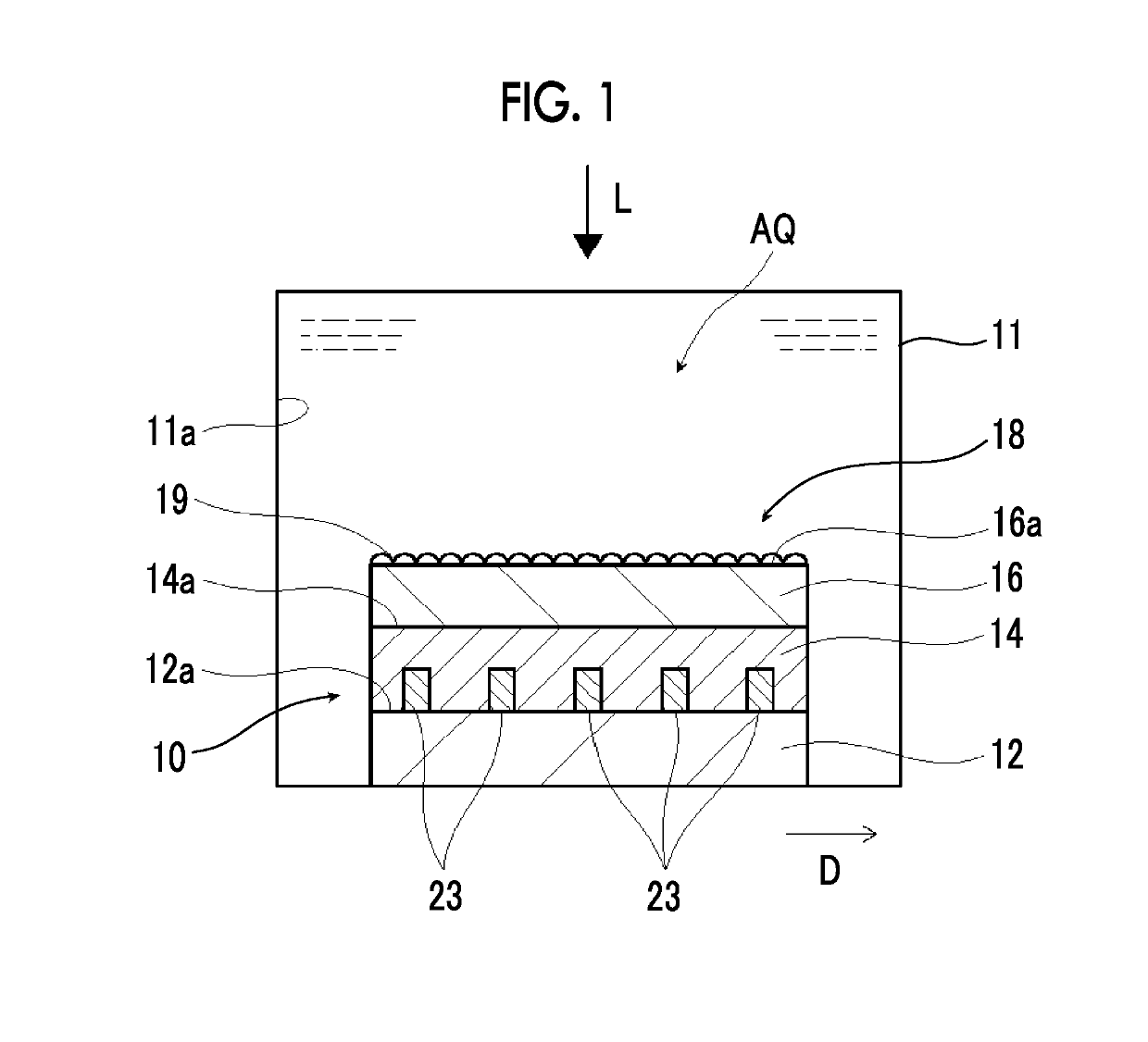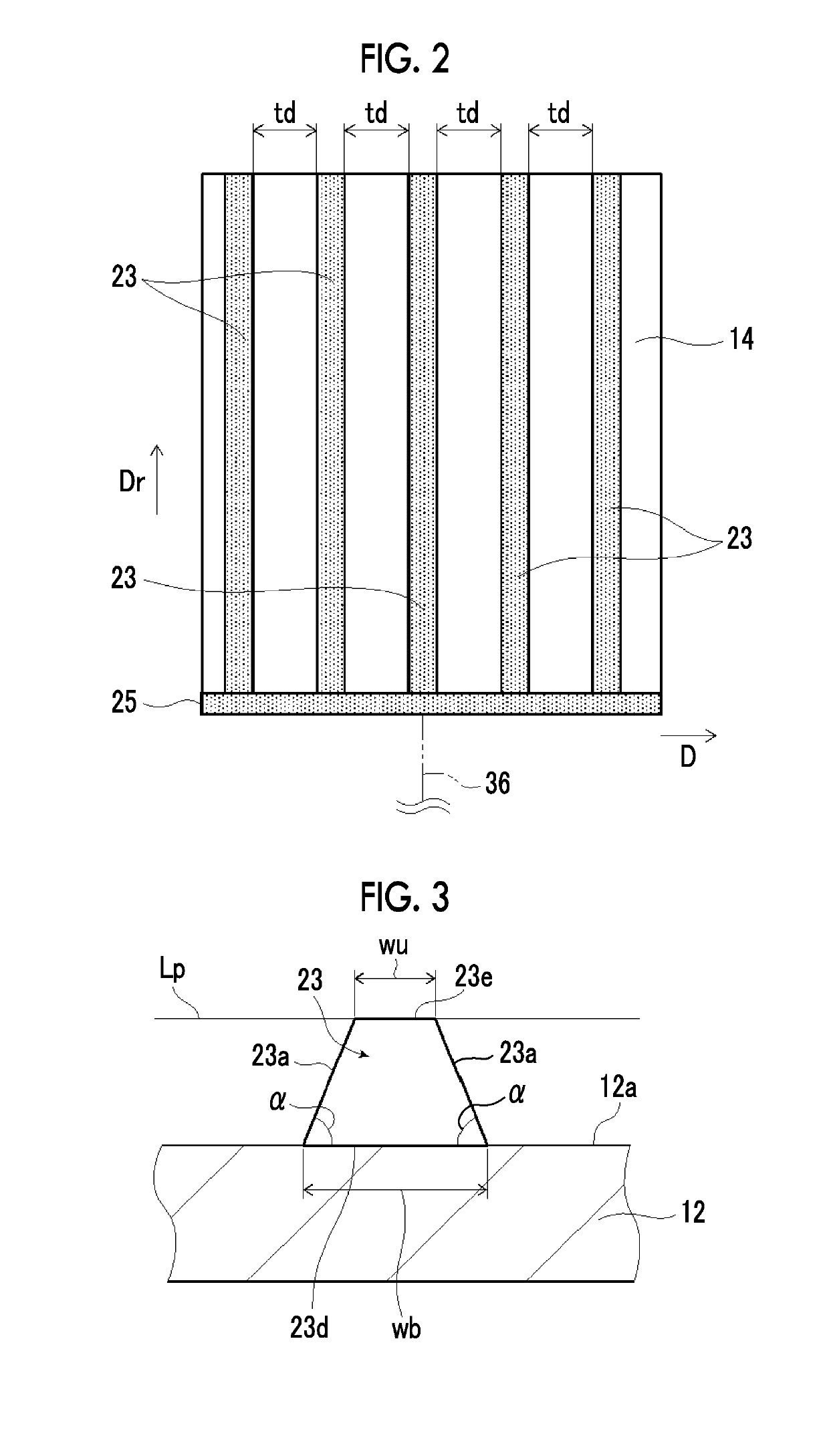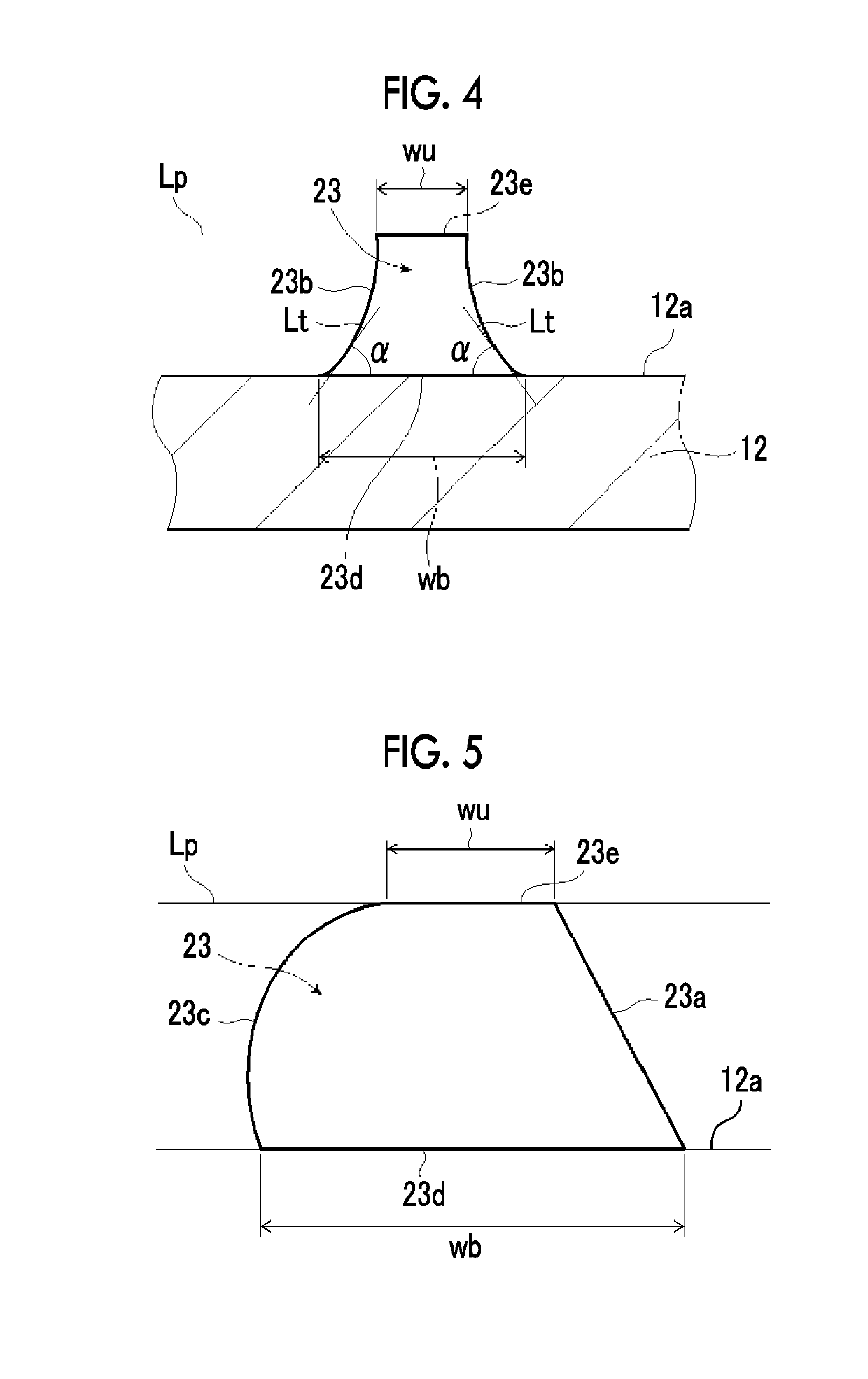Photocatalyst electrode, artificial photosynthesis module, and artificial photosynthesis device
a photocatalyst and electrode technology, applied in the direction of electrolysis components, electrode coatings, multiple component coatings, etc., can solve the problems of increasing the electrical resistance of the conductive part, adverse effects, and difficulty in obtaining effects, so as to improve the creation efficiency and reduce the electric resistance
- Summary
- Abstract
- Description
- Claims
- Application Information
AI Technical Summary
Benefits of technology
Problems solved by technology
Method used
Image
Examples
example 1
[0217]
[0218]A glass substrate on which an indium tin oxide (ITO) film was formed was prepared. The glass substrate is 10 cm×11 cm in sizes. A BiOI precursor was formed in a region of 10 cm×10 cm by the electrodeposition method, leaving a 1-cm portion on the glass substrate. Thereafter, a dimethyl sulfoxide solution (DMSO solution) in which VO(acac)2(vanadyl acetylacetonate) was dissolved was added dropwise and baked, and a BiVO4 substrate was formed.
[0219]
[0220]The BiVO4 substrate made as described above was immersed in an electrolytic solution in which iron ions and nickel ions were dissolved, and a co-catalyst was modified using light of air mass (AM) 1.5 G by a photo electrodeposition method.
[0221]
[0222]A plurality of copper wires having a width of 0.1 mm were formed at width intervals of 20 mm on the formed BiVO4 substrate of 10 cm×10 cm, linear metal electrical conductors were obtained, and the linear metal electrical conductors were protected with an epoxy adhesive. An ITO mem...
example 2
[0227]A plurality of copper wires having a width of 0.1 mm were formed at intervals of 20 mm on a glass substrate of 10 cm×11 cm. Thereafter, an ITO film that coats the copper wires is formed on the glass substrate. Accordingly, an ITO substrate was obtained on which a conductive layer having linear metal electrical conductors obtained by the copper wires being disposed at intervals of 20 mm was formed. A BiOI precursor was formed in a region of 10 cm×10 cm by the electrodeposition method, leaving a 1-cm portion on the ITO substrate of 10 cm×11 cm. Thereafter, a dimethyl sulfoxide solution (DMSO solution) in which VO(acac)2(vanadyl acetylacetonate) was dissolved was added dropwise and baked, and a BiVO4 substrate was formed. Thereafter, the co-catalyst modification was performed by the same method as that of Example 1, an ITO membrane portion of the formed BiVO4 substrate of 10 cm×10 cm was fixed with a clip, and a photoelectrochemical measurement was carried out.
[0228]Additionally,...
example 3
[0229]A plurality of copper wires having a width of 0.1 mm were formed at intervals of 20 mm on a glass substrate of 10 cm×11 cm. Thereafter, the copper wires were processed using the photolithography. Thereafter, an ITO film that coats the copper wires is formed on the glass substrate. Since the subsequent manufacturing process and the photoelectrochemical measuring method are the same as those of Example 2, the detailed description thereof will be omitted.
[0230]Regarding Example 3, the taper angle was 60° in a case where a cross-section of the copper wires was observed using the scanning electron microscope.
[0231]Additionally, also in Example 3, a small-sized BiVO4 substrate as described above was obtained similarly to Example 1. Then, the co-catalyst modification was applied as described above, and a photoelectrochemical measurement was carried out on the small-sized BiVO4 substrate.
PUM
 Login to View More
Login to View More Abstract
Description
Claims
Application Information
 Login to View More
Login to View More - R&D
- Intellectual Property
- Life Sciences
- Materials
- Tech Scout
- Unparalleled Data Quality
- Higher Quality Content
- 60% Fewer Hallucinations
Browse by: Latest US Patents, China's latest patents, Technical Efficacy Thesaurus, Application Domain, Technology Topic, Popular Technical Reports.
© 2025 PatSnap. All rights reserved.Legal|Privacy policy|Modern Slavery Act Transparency Statement|Sitemap|About US| Contact US: help@patsnap.com



